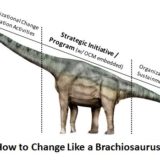
Workforce reductions are among the most disruptive organizational shifts. Whether triggered by market downturns, M&A activity, digital transformation, or cost containment, layoffs can have a lasting impact—not only on operational efficiency, but on morale, trust, and productivity.
But restructuring doesn’t have to result in cultural deterioration or disengagement. When executed with strategic clarity and human-centric design, organizations can emerge more focused, agile, and resilient.
This article outlines best practices for stabilizing organizational culture, maintaining productivity, and re-engaging employees in the wake of downsizing—backed by frameworks and real-world insights.
1. Stabilize the Culture: Over-Communicate, Re-Anchor, and Rebuild Trust
A common pitfall post-layoff is underestimating the emotional aftermath. The “survivor” employees—those who remain—are often anxious, disoriented, and questioning their future. To stabilize culture, leaders must proactively reset the tone and build psychological safety.
Key Actions:
-
Communicate Early and Often: According to PwC’s 2023 Global Workforce Hopes and Fears Survey, 74% of employees want more transparency from leadership, especially during uncertainty. Clear, consistent messaging about the “why” behind restructuring and “what’s next” is critical.
-
Visible, Empathetic Leadership: Senior leaders should be present across the organization—not just in town halls, but through skip-level meetings, AMAs, and video updates.
-
Reinforce Purpose and Values: Use post-restructure moments to re-anchor around mission and core values. Cultural rituals (e.g., recognition programs, leadership storytelling) remind employees what the organization stands for beyond headcount.
💡 Case Example: After a large-scale restructuring, a European telco launched a “Culture Reset” campaign—leveraging internal influencers to drive narrative alignment and values reinforcement. Within four months, their employee Net Promoter Score (eNPS) rose by 22 points.
2. Protect Productivity: Realign Roles, Rethink Priorities, Reset Systems
Layoffs don’t just eliminate roles—they create ripple effects in workflows, accountability, and team dynamics. Left unmanaged, this results in inefficiency and burnout.
Key Actions:
-
Reassess the Operating Model: Use a Target Operating Model (TOM) review to clarify roles, handoffs, and governance. Identify mission-critical processes that require resource protection or automation.
-
Role and Capability Mapping: According to BCG, companies that perform structured capability assessments post-downsizing achieve 18–22% higher functional productivity within six months. Don’t just “redistribute” work—ensure people have the capacity and skills to succeed in redesigned roles.
-
Short-Term Focus Sprints: Shift into 30-60-90 day planning cycles post-restructuring. This provides clarity amid uncertainty and encourages iterative improvement.
📊 Source: Deloitte’s 2022 Human Capital Trends report notes that organizations who adopt agile operating rhythms post-restructure are 2.4x more likely to outperform peers on cost and productivity metrics.
3. Re-Engage the Workforce: Address Survivor Syndrome and Foster Commitment
Even high-performing employees can disengage post-layoff—due to guilt, fear, or disconnection. Ignoring this is costly: disengaged employees are 37% more likely to leave within a year, per Gallup research.
Key Actions:
-
Re-Onboard the Team: Treat the post-restructure phase like a re-onboarding. Use team workshops to revisit goals, roles, and new team norms. Invite employees to co-create the path forward.
-
Upskill with Intent: Expand responsibilities and capabilities. Use microlearning, stretch assignments, and coaching to help employees grow into new scopes of work. This signals investment in their future.
-
Celebrate Progress and Wins: Recognition drives retention. McKinsey research shows that employees who feel recognized are five times more likely to remain engaged and committed.
🧠 Framework Tip: Apply the McKinsey 7S Framework to ensure alignment across strategy, structure, systems, staff, style, skills, and shared values. Misalignment here is a common root cause of post-restructure underperformance.
4. Lead the Organization Through—and Beyond—the Change
The final, and often most overlooked, component of post-downsizing recovery is sustained leadership. Restructuring isn’t a finish line—it’s the beginning of a new chapter that requires active navigation.
Key Actions:
-
Embed Listening Mechanisms: Use pulse surveys, digital feedback platforms, and small-group discussions to track sentiment and surface concerns.
-
Track the Right Metrics: Move beyond financial KPIs. Incorporate leading indicators of cultural health—such as eNPS, cross-functional collaboration scores, and manager effectiveness.
-
Build Leadership Resilience: Provide support for frontline managers, who are often under strain. Equip them with tools for communication, coaching, and change management.
📌 Insight: A study by Harvard Business Review found that the success of post-downsizing transformation correlates strongly with how middle managers are supported and empowered during the transition.
Conclusion: Done Right, Downsizing Can Be a Launchpad—Not a Setback
Restructuring is inherently difficult. But when it’s done right—with strategic clarity, empathetic leadership, and operational discipline—it can serve as a catalyst for renewal.
Organizations that proactively manage culture, productivity, and engagement after workforce reductions don’t just recover. They re-emerge stronger, more agile, and more aligned with their future ambitions.
The key lies in balancing the business rationale with the human impact—every step of the way.
🔍 Remember: Employees will forget the strategy—but they’ll remember how you made them feel during the transition. That emotional memory becomes the foundation of your next culture.











